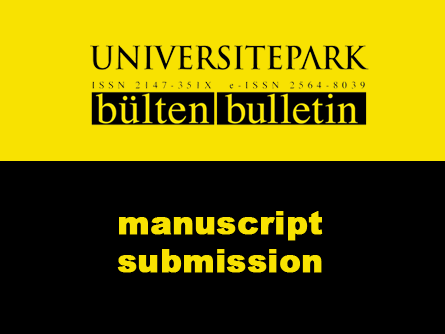Future Possibilities for Transitional Justice in Somalia
pp. 108-118 | Published Online: July 2018 | DOI: 10.22521/unibulletin.2018.72.3
Muhammed Hamid Muhammed
![]() Full text PDF |
3100 |
2463
Full text PDF |
3100 |
2463
Abstract
Societies emerging from violent civil war and conflict face a dilemma as to what comes first between peace and justice. Practical experiences, however, show that usually peace processes are more prioritized than the issue of justice. Nevertheless, peace processes can be sustainable only if the issues of justice are integrated. The incorporation of justice will resolve the issue of violent crime, crimes against humanity, and gross human rights violations committed throughout the conflict. Somalia, as a country passing through such a phase, needs to facilitate the process of peace and justice cohesively. The way justice is served in a transitional society is known as transitional justice. Transitional justice mechanisms enable transitional societies to address the issue of victims and perpetrators of violent crime. This paper highlights the Somalia conflict from a historical dimension and transitional justice mechanisms that could be applied in Somalia. Methodologically, the paper, solely follows a desk review method.
Keywords: human rights violations, transition justice, Ad hoc tribunals, Shari’ah, Xeer
ReferencesAdam, A. M. (2010). Internal Crisis and External Actors in Somalia”. In U. J. Dahre (Ed.), Proceedings of the 9th Conference on the Horn of Africa, (pp. 87-107). Lund, Sweden.
Annan, K. (2004). The Rule of Law in Conflict and Post-Conflict Societies. United Nations.
Barsalou, J. (2005). Trauma and transitional justice in divided societies. Special Report. Washington DC: United States Institute of Peace.
Bronsteen, J., Masur, J., & Buccafusco, C. (2010). Retribution and the Experience of Punishment. California Law Review, 98(5), 1463-1496.
Dagne, T. (2011). Somalia: Current Conditions and Prospects for a Lasting Peace. Washington DC: Congressional Research Service.
Durch, W. (1996). Introduction into anarchy: humanitarian intervention and state-building in Somalia. In W. Durch (Ed.), UN Peacekeeping, American Policy and the Uncivil Wars of the 1990s Basingstoke: Macmillan.
East and Horn of Africa Human Rights Defenders Project [EHAHRD]. (2008). The current situation of Human Rights/Defenders in the East and Horn of Africa: Report to the Forum on the participation of NGOs. Presented at the 43RD Session of the African Commission on Human and People’s Rights (ACHPR), Switzerland.
Elliesie, H. (2012). Statehood and constitution-building in Somalia: Islamic response to a failed state. In R. Grote & T. J. Röder (Eds.), Constitutionalism in Islamic countries: between upheaval and continuity (pp. 553-581). Oxford, UK: Oxford University Press.
Farah, M. (2008). The Possibilities of International Prosecution Against the Former Somali Military Regime for Human Rights Abuses in Somaliland from 1981 To 1991: Establishing Individual Criminal and Civil Responsibility Under International Law. Centre for Human Rights, Faculty of Law, University of Pretoria. South Africa.
Gundel, J., & Dharbaxo, A. A. O. (2006). The predicament of the `Oday`: the role of traditional structure in security, Right, law and development in Somalia. Nairobi, Kenya: Danish Refugee Council and Novib-Oxfam.
Human Rights Watch. (2011). You Don’t Know Who to Blame: War Crimes in Somalia. New York.
International Centre for Transitional Justice (ICTJ). (2009). What is transitional justice? Focus: transitional justice. New York: International Centre for Transitional Justice.
Kirsch, P. (2004). The International Criminal Court: A new and necessary institution meriting continued international support. Fordham International Law Journal, 28(292), 292-307.
Kisangani, E. (. Novos Estudos Jurídicos (NEJ), 13
Kivimäki, T. (2001). Explaining violence in Somalia: a study based on a project commission by the finish foreign ministry. Helsinki / Copenhagen: Conflict Transformation Service.
Kritz, N. (1995). Transitional Justice (Vol. I-III). Washington, DC: US Institute of Peace Press.
Landinfo. (2011). Somalia Report, Protection and Conflict Resolution Mechanisms. Oslo, Norway: Country of Origin Information Centre.
Le Sage, A (2005). Stateless Justice in Somalia: Formal and Informal Rule of Law Initiatives. Geneva, Switzerland: Centre for Humanitarian Dialogue.
Minow, M. (1998). Between Vengeance and Forgiveness: Facing History after Genocide and Mass Violence. Boston Beacon: Press.
Mobekk, E. (2005). After Intervention: Public Security Management in Post-Conflict Societies from Intervention to Sustainable Local Ownership. In A. H. Ebnother & P. Flur (Eds.), Transitional Justice in Post-Conflict Societies – Approaches to Reconciliation (pp. 261-293). Vienna: Geneva Centre for the Democratic Control of Armed Forces (DCAF), Bureau for Security Policy at the Austrian Ministry of Defence.
Møller, B. (2009). The Somali conflict: the role of external actors. Copenhagen, Denmark: Danish Institute for International Studies (DIIS).
Mulugeta, K. (2009). The Role of Regional and International Organizations in Resolving the Somali Conflict: The Case of IGAD. Addis Ababa: Friedrich Ebert-Stiftung.
OSAA. (2007, June). DDR and transitional justice. Paper presented at the Second International Conference on DDR and Stability in Africa. Kinshasa, Democratic Republic of Congo.
Qalinle, A. W. (2010). Promoting Rule of Law in an Era of ‘Re-Islamization in Somalia”. In U. J. Dahre (Ed.), Role of Democratic Governance versus Sectarian Politics in Somalia. Proceedings of the 9th Conference on the Horn of Africa (pp. 143-158). Lund, Sweden: Media-Tryck, Lund University.
Villalba, C. (2011). Briefing Paper – Transitional Justice: Key Concepts, Processes and Challenges. Institute for Democracy & Conflict Resolution, University of Essex Knowledge Gateway.
Terdman, M. (2008). Somalia at War – Between Radical Islam and Tribal Politics. University Research Paper, No. 2. Tel Aviv: The S. Daniel Abraham Center for International and Regional Studies.
Wright, V. (2010). Deterrence in Criminal Justice: Evaluating Certainty vs. Severity of Punishment. Washington, D.C.: The Sentencing Project Research and Advocacy Program.
Zuin, M. (2008). A Model of Transitional Justice for Somalia. PRAXIS the Fletcher Journal of Human Security, Vol. XXIII, 89-107.
UNIBULLETIN News!
► New issue coming soon! (Volume 13 Issue 1, 2024)
► Call for Papers
UNIBULLETIN is calling for submissions. Authors are invited to submit papers from the all fields of the Education (General) and Social Sciences (General) in the international context. All submissions should be presented only in English.
